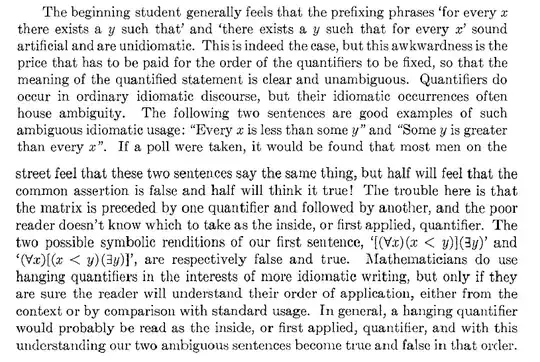I was reading the book "Advanced Calculus" by Loomis and Sternberg and I was following everything perfectly until I came across a paragraph which I have attached here.
My first confusion is that I am unable to understand what the authors are trying to say in this paragraph about hanging quantifiers and how does the first ambiguous statement become true and second become false?. My second confusion arises when I came across two statements: $$'[(\forall x)(x<y)](\exists y)'$$ and $$'(\forall x)[(x<y)(\exists y)]'$$ My problem is that a quantifier has been used after the predicate $(x<y)$ in both the statements. How is this possible? And how does first is false and second is true? I have never seen such a way of writing logical statement.
My current understanding:
I understand that the order of quantifiers are important.
"Every $x$ is less than some $y$" is False.
"Some $y$ is greater than every $x$" is False.
